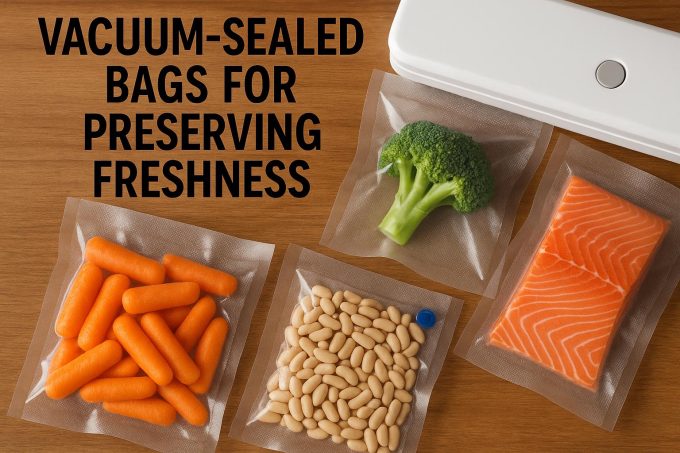Understanding Vacuum-Sealed Bags
Vacuum-sealed bags have become an increasingly popular solution for preserving the freshness of perishable items. Most commonly used for food preservation, the method involves removing air from a bag before sealing it. This process is instrumental in extending the shelf life of the contents, as it minimizes bacterial growth and slows down oxidation, which are among the primary factors that contribute to food spoilage.
The Science Behind Vacuum-Sealing
The principle of vacuum-sealing is rooted in its ability to remove air, particularly oxygen, from the packaging environment. Aerobic bacteria and fungi, which significantly contribute to food spoilage, rely on oxygen for their survival and proliferation. By effectively removing this crucial element, vacuum-sealing dramatically reduces the capacity of these microorganisms to grow and multiply. Moreover, oxidation, a chemical reaction that can deteriorate food quality, is mitigated in the absence of air. This reduction in oxidation helps to preserve both the flavor and nutritional content of food items, thereby significantly extending their shelf life.
Materials Used in Vacuum-Sealed Bags
To ensure effective vacuum-sealing, the bags are often constructed from multi-layered materials, typically involving a combination of polyethylene and nylon. These layers serve to create an impervious barrier against air, moisture, and odor. The seamless structure of these materials is critical, as it helps prevent the infiltration of external elements, which could otherwise compromise the quality and safety of the sealed contents. The durability and strength of these materials play a vital role in maintaining the integrity of the vacuum seal, ensuring the items inside are well-protected over time.
Applications Beyond Food Preservation
Though vacuum sealing is predominantly associated with food storage, its applications extend well beyond this domain. In the non-food sectors, vacuum-sealing proves beneficial for products that are sensitive to air exposure. Textiles, such as clothing and bedding, can be vacuum-sealed to conserve space in storage and offer protection against moisture damage and pests. Additionally, vacuum sealing finds application in the electronics industry, where it serves to shield sensitive components from moisture and oxidation, enhancing their longevity and performance.
Practical Considerations
For effective vacuum sealing, it is paramount to consider the quality of both the sealing equipment and the materials employed. Investing in a dependable vacuum sealer and high-quality bags can substantially influence the efficacy of the vacuum seal. Moreover, adherence to specific storage guidelines tailored to different items is crucial for optimizing the benefits of vacuum-sealing. For instance, proper categorization and labeling of sealed items can facilitate efficient inventory management and retrieval.
Manufacturers and retailers offer a wealth of resources and user guides for those interested in exploring vacuum-sealing techniques further. These guides can provide invaluable tips and advice, helping users achieve optimal results and extend the lifespan of their vacuum-sealed items. Whether used for food preservation or in non-food sectors, vacuum-sealing remains a versatile and practical solution for maintaining the freshness and integrity of various products.

